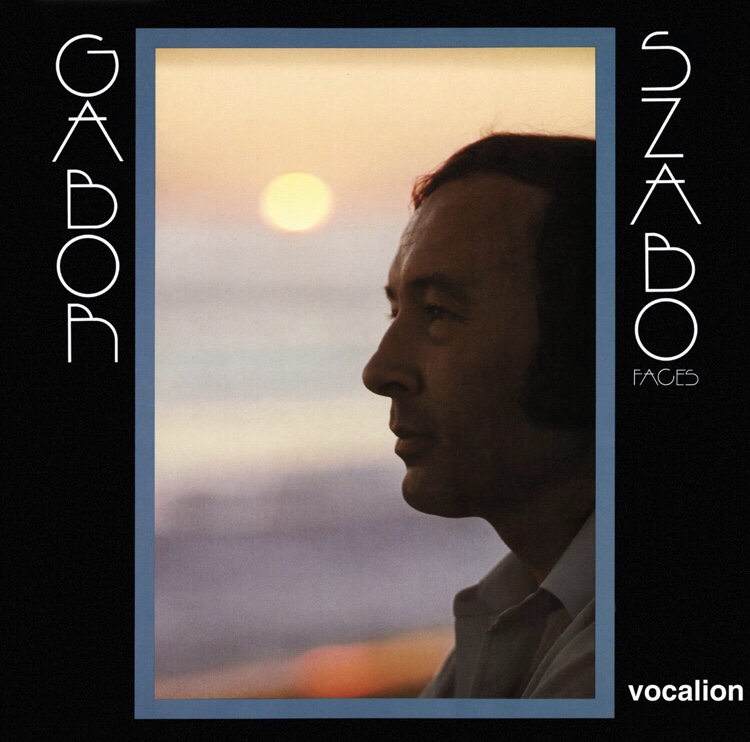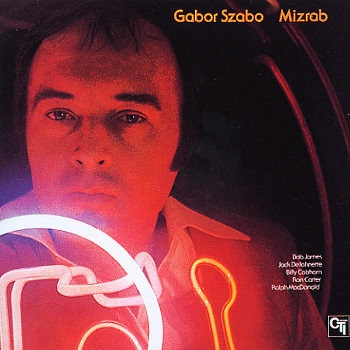

This arrived on Sunday. It’s a Japanese reissue, from a series of CTI re-releases; sadly the liner notes are Greek to me, so to speak.
Recorded at Rudy Van Gelder’s famous studio, in ‘72, it was the first of just three for Creed Taylor’s equally famous CTI label (the others being Rambler and Macho).
With a rhythm section of Bob James, Ron Carter, Ralph MacDonald, Billy Cobham and Jack DeJohnette, and horns that feature Hubert Laws and others, Szabo is supported by a stellar cast. The arrangements are by Bob James, and it’s all engineered by RVG.
What was side one was made up of the first two lengthy cuts, Mizrab and Thirteen, both Szabo originals. Side two develops the guitarist’s famously eclectic range in terms of other folk’s material, with It’s Going To Take Some Time, by Carole King, and Seals’ and Crofts’ Summer Breeze, sat either side of a Szabo take on a Shostakovich Concerto!
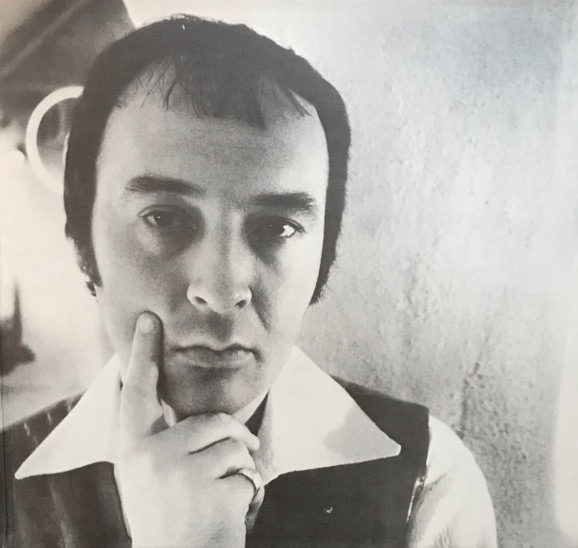
The album kicks off with Szabo original and titular Mizrab, Ron Carter’s opening bass figures conjuring an Arab-influenced exoticism suggested by the track’s name. Once it gets going, there are shades of modalism, and things even sound Metheny-esque occasionally.
The title track clocks in at just under ten minutes, and after Szabo’s own long solo, the rhythm section of Bob, Ron, Billy and Ralph really cook the groove in a deliciously early ‘70s jazz fusion vein, so very CTI!
It’s interesting hearing Cobham playing in a more restrained than usual manner! Which he does admirably, whilst still retaining his instantly recognisable touch and sound. Towards the end he ramps it up a bit, when taking a solo. Does he also slip out of sync? I’m friends with Ron Carter on FB. I might have to ask him about this!
The same group then tackle a second Szabo number, called Thirteen. This begins with Szabo’s and Ron duetting, showing what total masters of their instruments they are, in a fabulous interplay, before Cobham and co join (sans Ralph, poss’?), for an epic jam.
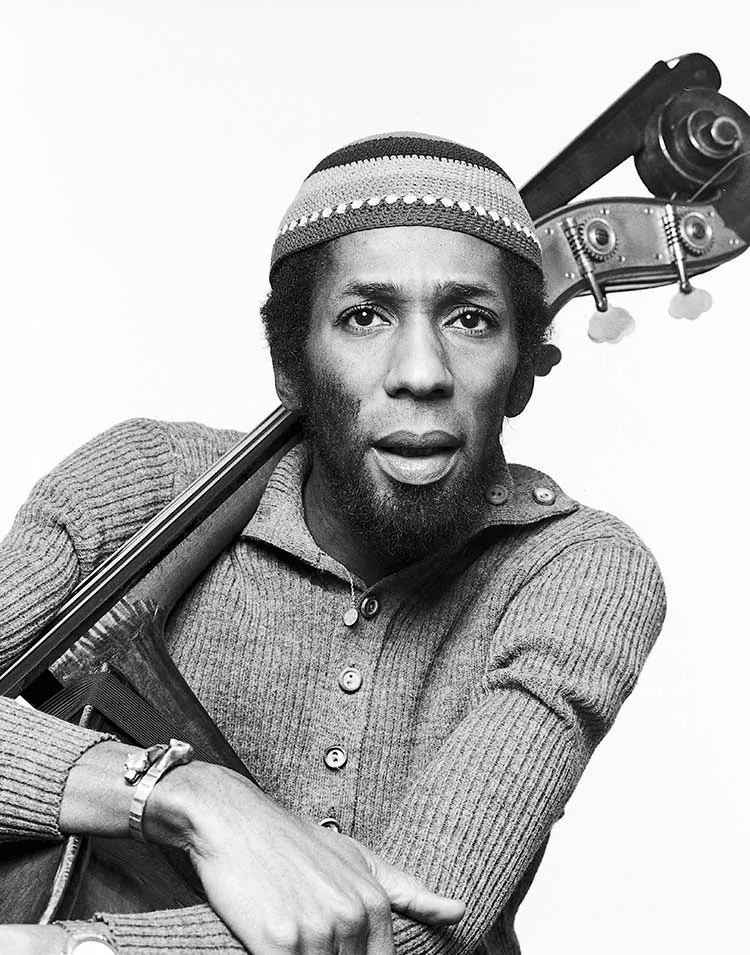
The main two chord vamp is just a semi-tone shift, again evoking eastern vibes. And, having introduced that term, I have to pause and remark on what an incredible vibes player Szabo is. Not vibraphone, obviously! But feel. And it’s clear that his vibesmanship is subtly but strongly steering the whole ensemble.
Also clocking in at near ten minutes (just over nine this time), the groove and feel are quite radically different ‘cause Bob James is playing acoustic piano, as opposed to the Fender Rhodes type electric of Mizrab.
Also worthy of note is that there’s quite clearly, on both Mizrab and Thirteen, a second guitar. But it’s Szabo overdubbing, rather than another player. Yet another sign of Gabor’s unusual and idiosyncratic take on contemporary jazz. Really quite something!
After the long epic intensity of the two tracks of ‘side one’ cone the three shorter tracks that formerly comprised ‘side two’. These are where the strings and horns come in, with that rich, lush and full CTI production feel.
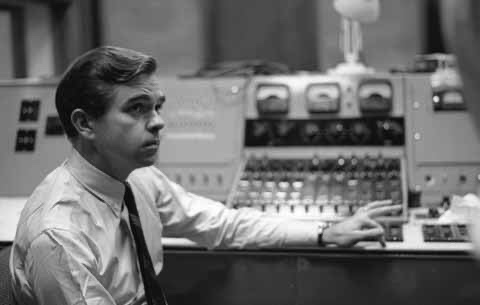
Carole King’s It’s Going To Take Some Time feels aptly light, and pop-folk, after the jazzy intensity of ‘side one’. But despite the expansion from quartet or quintet to a full on studio number with strings and horns, it’s still very Szabo, and sits happily with the foregoing material.
Things get a bit more ambitious with Concerto #2, which starts out like a small to medium chamber orchestra, and is more Shostakovich/classical – naturally – than what has preceded it. When it transitions from orchestra to jazz ensemble a pronounced 6/8 feel emerges, and the much lighter touch of Jack DeJohnette on drums adds to the change of feel.
I’m not always convinced by jazz meets classical experiments (Garbarek with The Tallis Scholars was awful!). But I quite like what Szabo et al cook up here. Interestingly it starts out classical, goes all jazz, and then the two start to blend and merge. This is an approach Don Sebesky explores on another excellent CTI recording, Giant Box, albeit with a rather overall effect.
And so we come to the fifth and final track, the Seals and Croft classic, Summer Breeze, which I first grew to know and love via The Isley Bros version. Cobham is back in his throne, and this track returns the entire recording to a kind of sonic and spiritual home/centre, that perfectly balances all the disparate yet homogenised elements that all the players and the material have brought to the party.
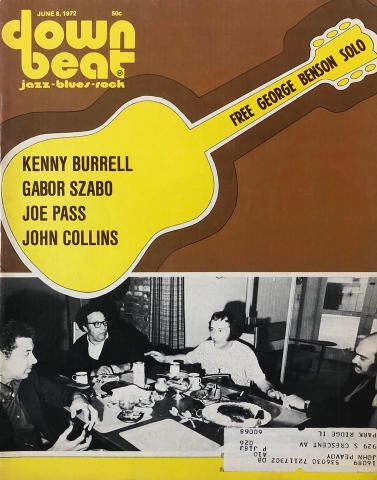
There’s plenty of strings and horns, beautifully arranged by James, a middle soloing section over a cleverly constructed riff (Carter and Cobham expertly driving the groove, with a little ‘back to front’ but if rhythmic play thrown in) from the song, all bookended with the melodic themes of the original composition, beautifully played by a truly stellar cast of musicians, fabulously recorded by Rudy, delivering another gem for Creed. Result!

